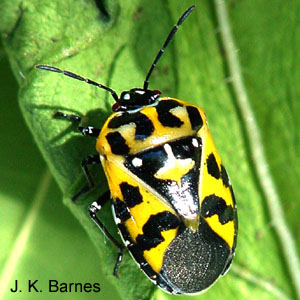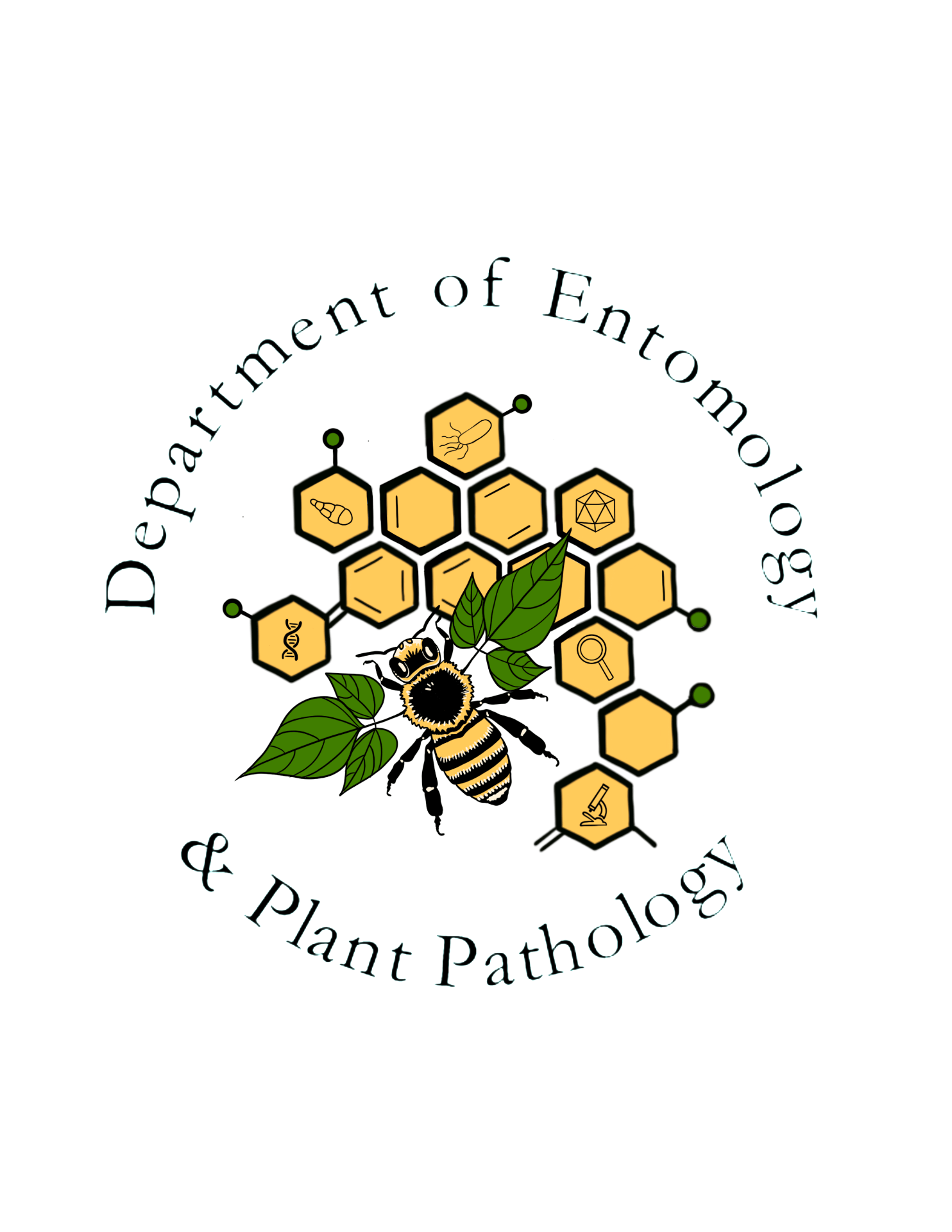Harlequin bug
Order: Hemiptera
Family: Pentatomidae
Genus and species: Murgantia histrionica (Hahn)

The harlequin bug is an important pest of cabbage, cauliflower, Brussels sprouts, and related cruciferous crops, and it is a minor pest of some other vegetable crops, including potatoes, tomatoes, eggplant, and okra. The bugs suck sap from the plants, causing them to wilt, turn brown, and die. The harlequin bug is native to Mexico and Central America. It was first reported in the United States from Texas in 1864, and although it is still primarily a southern insect, it ranges as far north as New Hampshire, New York, Minnesota, South Dakota, Nebraska, and California. It has two to several generations per year, and the species winters in the adult stage. Harlequin bugs exhibit aposematic, or warning, coloration, advertising their toxic qualities. They sequester toxins – mustard oil glycosides – from their host plants. When adults are squeezed, they expel toxic liquid from the sides of the prothorax. This substance is repugnant to at least some veretebrate predators. Male initiate substrate-borne vibrational communication. Males produce five different virational songs, whereas females produce only one.
